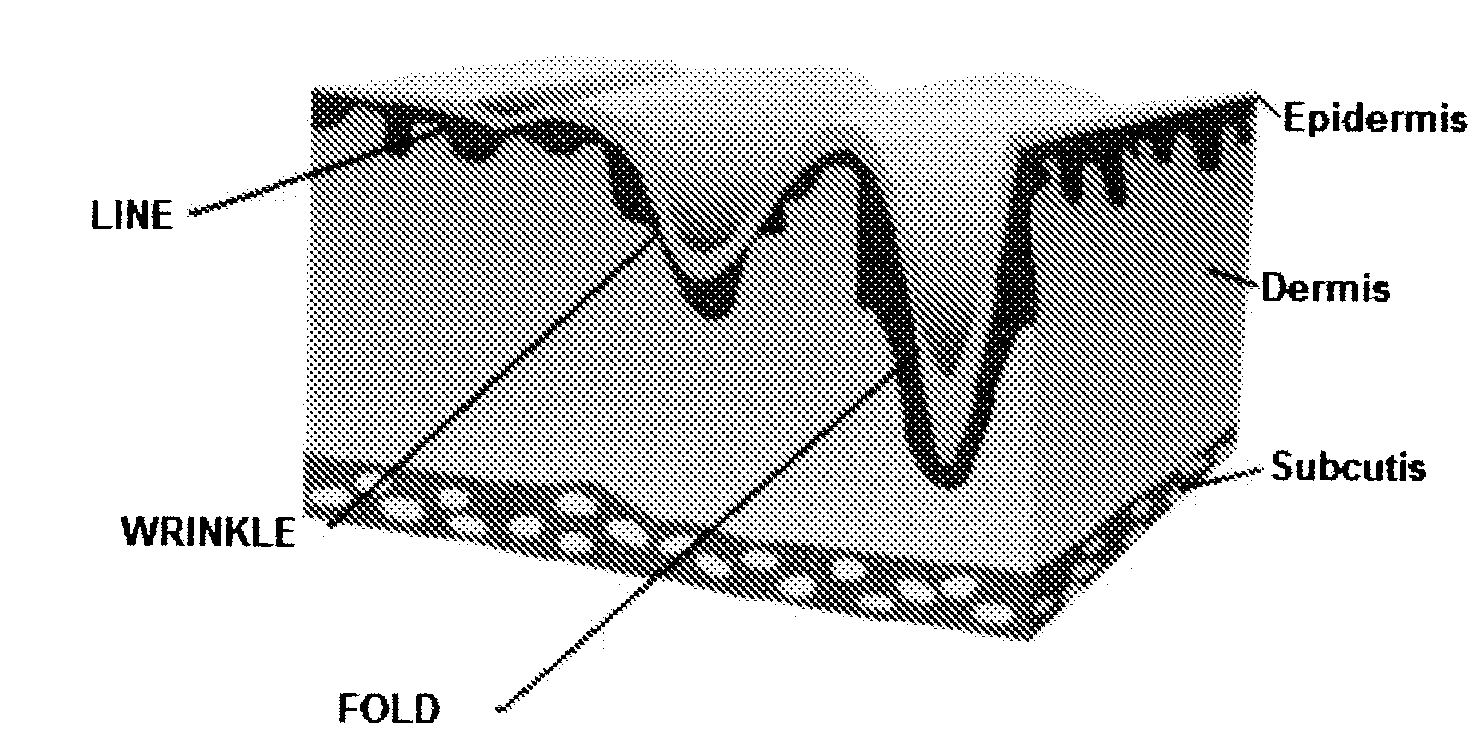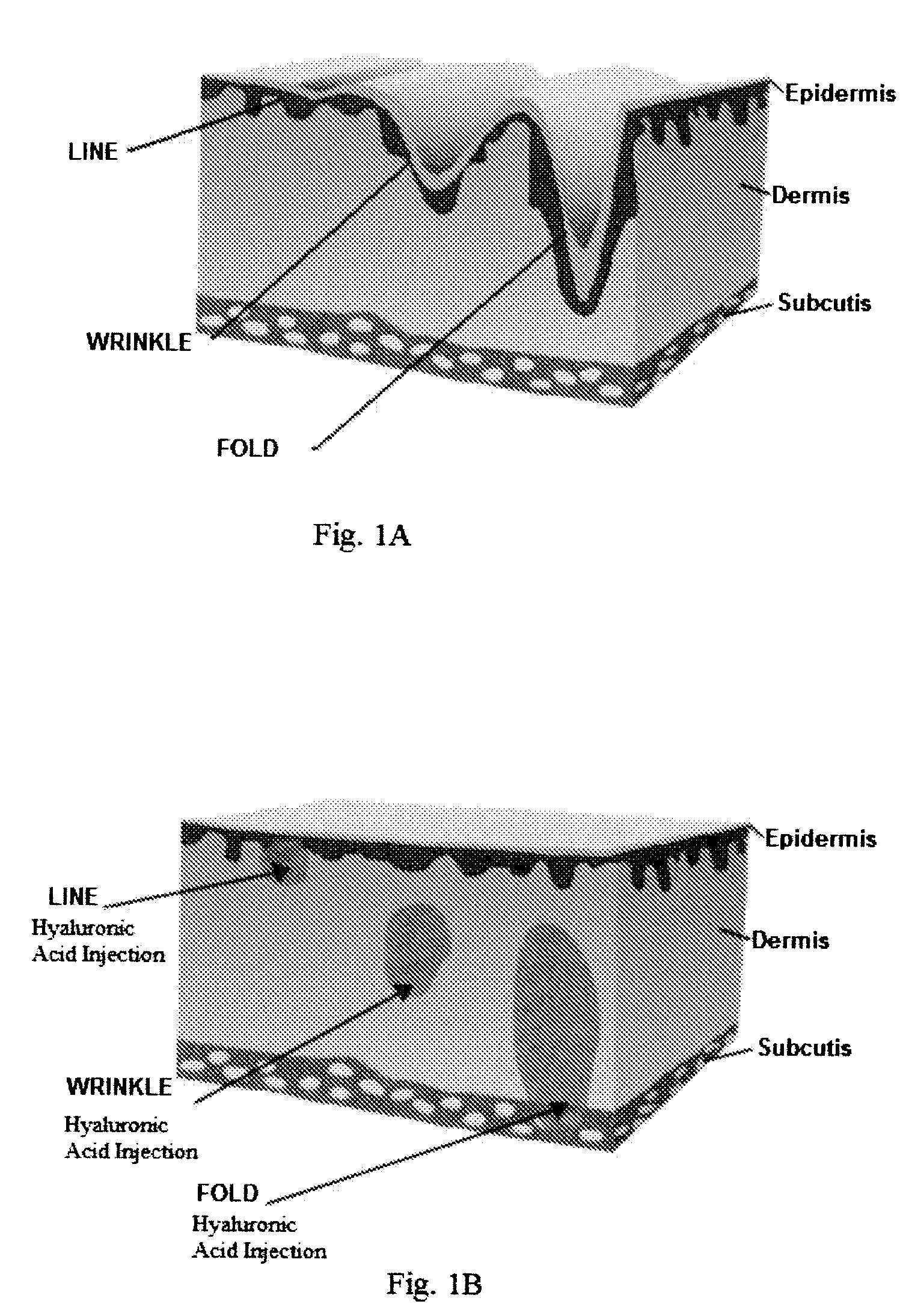Coated Hyaluronic Acid Particles
a technology of hyaluronic acid and particles, which is applied in the field of soft tissue augmentation, can solve the problems of skin cells reducing the production of hyaluronic acid, increasing the rate of its degradation, and aging skin losing collagen, so as to increase the longevity of hyaluronic acid
- Summary
- Abstract
- Description
- Claims
- Application Information
AI Technical Summary
Benefits of technology
Problems solved by technology
Method used
Image
Examples
example 1
[0042]A cross-linked hyaluronic acid (Hylaform) was first mixed for 20 minutes at approximately 2000 rpm. The Hylaform was next vortexed with water and Bovine Serum Albumin (BSA) until the BSA was dissolved. The resulting Hylaform / BSA solution was added to mineral oil while stirring at approximately 800 rpm. The mixer speed was next increased to approximately 900 rpm while a solution of 8% gluteraldehyde was added. The solution was stirred for several hours to allow for effective crosslinking of the BSA. The resulting mixture was washed with ethyl ether to remove the mineral oil and the coated particles were washed with water.
[0043]FIG. 2 demonstrates the resulting albumin coated hyaluronic acid particles. The size of the coated particles may be adjusted by adjusting the size of the Hylaform particles used and adjusting the stirring speed during the coating process. The rate of degradation of the albumin coating may be controlled by controlling the cross-linking density of the album...
example 2
[0047]Sodium alginate was dissolved in water, then Hylaform was added by sonication and vortexing. The resulting alginate / HA mixture was added through a small diameter needle to a 0.1M CaCl2 solution while stirring.
[0048]FIG. 3 shows the resulting coated particles. The alginate coated particles are flexible, making them relatively suitable for injection. The alginate coated particles also swell in the presence of water. The size of the coated particles may be adjusted by adjusting the size of the Hylaform particles used and adjusting the concentration of alginate used to adjust the resulting thickness of the coating. In one preferred embodiment, the alginate coated particles are approximately 500 μm to approximately 2000 μm in diameter. In a further preferred embodiment, the albumin coated particles are approximately 500 μm to approximately 1000 μm in diameter. The rate of degradation of the coating may be controlled by adjusting the alginate's cross-linking density and / or by furthe...
example 3
[0052]PLGA (50:50) was dissolved in ethyl formate. Dry, ground, non-crosslinked hyaluronic acid was added to the PLGA solution by vortexing and sonication. The resulting PLGA / HA solution was added to a solution of water and a surfactant, Pluronic F-68, while stirring. The mixture was stirred until most of the ethyl formate evaporated from the mixture.
[0053]FIG. 4 shows the resulting PLGA coated particles. One advantage of the PLGA coated hyaluronic acid particles of this embodiment is their swelling and slow permeation characteristics. Specifically, PLGA acts like a membrane, allowing slow water permeation into the hyaluronic acid within the coated particles. The hyaluronic acid swells in the presence of water, causing the entire particle to swell. Over time, the PLGA coating biodegrades, allowing hyaluronic acid to be released from the microspheres. The size of the swelling particles may be controlled by controlling the size of the original hyaluronic acid particles and thickness o...
PUM
| Property | Measurement | Unit |
|---|---|---|
| Thickness | aaaaa | aaaaa |
| Thickness | aaaaa | aaaaa |
| Diameter | aaaaa | aaaaa |
Abstract
Description
Claims
Application Information
 Login to View More
Login to View More - R&D
- Intellectual Property
- Life Sciences
- Materials
- Tech Scout
- Unparalleled Data Quality
- Higher Quality Content
- 60% Fewer Hallucinations
Browse by: Latest US Patents, China's latest patents, Technical Efficacy Thesaurus, Application Domain, Technology Topic, Popular Technical Reports.
© 2025 PatSnap. All rights reserved.Legal|Privacy policy|Modern Slavery Act Transparency Statement|Sitemap|About US| Contact US: help@patsnap.com



